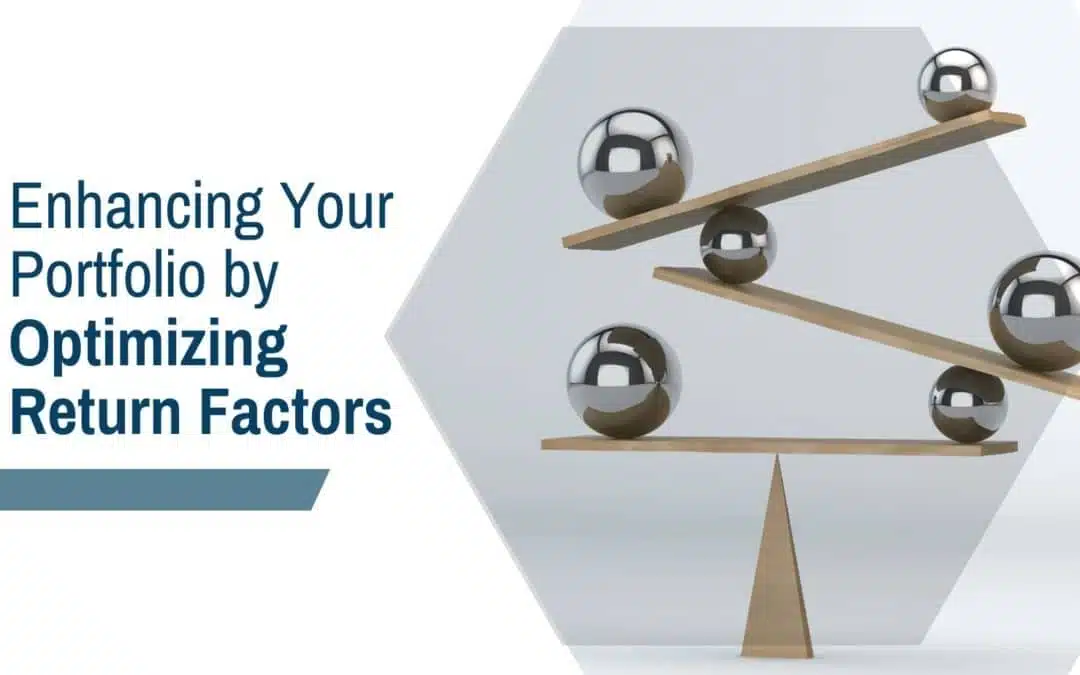the empowered investor
Investment Principal #3: Using Passive/Index Funds or ETFs
Choose Index-Based or Passively Managed Asset Class Investments
Key Takeaways
- Investing in asset classes and diversifying them globally are the first two essential building blocks for evidence-based investing. The next step is to implement these strategies through passive or index-based market exposure.
- Index-based or passive asset class funds focus on how to reduce the costs and frictions involved in capturing the market’s generous expected returns over time.
- Index funds track commercial indexes. Indexes provide benchmarks for comparison by tracking representative components within an asset class. Their components are weighted by market capitalization, and selected based on objective rules or parameters, rather than subjective perceptions or predictions.
- We prefer investment funds that invest in entire asset classes according to a set of rules of ownership that are held constant, regardless of market conditions.
- Because mutual funds have been around longer, some asset classes are still best captured through them. However, when appropriate asset class ETFs exist, they are often more cost- and tax-efficient than their mutual fund equivalents.
“Investors often struggle with execution. Whether you’re a charitable organization, whether you’re a business, whether you’re a sports organization, if you don’t have good execution—if you’re not careful with the details—you’ll lose your way.”
Strategy is one thing. Action is another. As we just covered in our series of Building Blocks for Evidence-Based Investing, it makes all kinds of sense to invest in asset classes, and diversify them globally. This reduces the stress related to chasing after hot stocks and volatile markets, and helps you pursue durable expected returns.
That’s a winning combination indeed. But how do you do it? Today, you’re about to find out, as we turn to Principal #3 in our list of Building Block essentials for evidence-based investors, covered here and in our book, The Empowered Investor:
- Asset class investing
- Diversification
- Passive or index-based market exposure
- Return factors
Turning Investment Plans into Reality
There are three hypothetical ways to turn your diversified, asset class investment plans into reality.
- Buy lots of individual stocks: You could invest in a diversified mix of hundreds, if not thousands of securities to represent the asset classes you need in your portfolio.
- Select actively managed funds: You could choose actively managed funds that seek to outperform broad asset classes or markets through stock-picking or market-timing.
- Invest in index-based or passively managed asset class funds: You could invest in funds that seek to capture asset class returns as efficiently as possible.
Does it matter which you choose? Maybe not in theory, but practical concerns count too. I think we can all agree that tactic #1—juggling myriad individual stocks—would be expensive, time-consuming, and a general pain in the neck. However, it may be tempting to pursue tactic #2, stretching to outperform average returns with actively managed funds.
The problem is, most actively managed funds don’t even consistently match the market’s average returns, let alone beat them. In previous posts, we already covered the disappointing data on active investing as well as the the “average” advantage.
This leaves us with tactic #3, investing in index-based or passively managed asset class funds. This approach is relatively simple, cost-effective, and ideally structured to keep you on course toward your personal financial goals.
What are index-based or passively managed asset class funds? Call them what you will, we’re talking about a fund management strategy that:
- Prioritizes efficient investing: Instead of trying to pick stocks or time the market, it focuses on reducing the costs and frictions involved in capturing the market’s generous expected returns over time.
- Is evidence-based: It’s grounded in an overwhelming body of academic and applied evidence on how to achieve that ideal.
Fund managers who embrace evidence-based principles offer a number of advantages (which we cover in more detail in our podcast here):
- Investment efficiencies: Focusing on pure asset class exposure helps fund managers reduce your exposure to concentrated investment risks, while pursuing the greatest measure of expected returns available from any given asset class.
- Cost efficiencies: Asset class investing typically requires fewer trades. This can contribute to lower management expenses, which can enhance your end returns.
- Tax efficiencies: Prioritizing patient management over hyperactive efforts to beat the market can also facilitate improved tax efficiency.
- Enhanced transparency: It’s easier to know what’s going on behind the proverbial curtain with a disciplined, rules-based process. It also reduces style drift, which is what happens when an active fund manager moves away from their stated strategy. You may think your fund manager is investing your money in value stocks, for example, but some of it may actually be sitting on the sidelines in cash.
Next, let’s take a look at how index-based and passive asset class funds work. As we covered in From Indexing to Evidence-Based Investing, index-based funds came along first, so we’ll start there.
What’s an Index Fund?
To describe how an index fund works, we need to begin with its index. An index is like a basket, filled with an accurate sampling of the stocks in a country, sector, and/or asset class. The samples are weighted by market capitalization, so companies or sectors with more market share take up more of the basket.
For example, the S&P 500 Index tracks U.S. large company stocks, with Apple (APPL) as its biggest component as of April 1, 2022. The S&P/TSX Index tracks Canadian large-company stocks, with the Royal Bank of Canada (RY) as its biggest holding. And so on.
As we described in chapter 5 of The Empowered Investor, indexes were originally designed (ironically enough) to gauge active investors’ performance. When an investment strategy claimed it was beating the market, was it actually doing so? If so, by how much and for how long? Before there were indexes, there was no way to tell. Indexes provide objective benchmarks for comparison by tracking representative components within an asset class, sector, or market. Their components are selected according to objective rules or parameters, rather than subjective perceptions or predictions.
You cannot invest directly in an index. But it wasn’t long before visionaries like Vanguard’s Jack Bogle noticed they were incredibly hard to beat. Why not just invest in the indexes’ holdings and eliminate the extra costs of active investing? Bogle led the charge on creating low-cost retail investment vehicles—index funds—so everyday investors could do just that.
Moving Past Index Funds
It took a while for index investing to catch on, especially here in Canada. But over time, indexes and index funds alike have proliferated until, now, not every index is passively focused as described above. Today, some “indexes” target hot, active trends instead of evidence-based sources of expected return such as asset classes.
We recommend avoiding so-called index funds that track these equivalents of wolves in a sheep’s clothing. As we described in our podcast on asset class investing, focus instead on the ones that invest in entire asset classes according to a set of rules of ownership that are held constant, regardless of market conditions.
Most well-known index funds still fit this description. But again, not all of them do. Plus, not all passively-managed asset class investments are index-based. Some fund managers have achieved the same end goal by going straight to market benchmarking tools such as the Center for Research in Security Prices (CRSP) databases, essentially skipping the commercial index intermediary for their asset class investment fund construction.
In our next post, we’re going to dive into how fund managers such as Dimensional Fund Advisors take asset class investing one step further by finetuning the factors involved. For now, note that both index-based and direct asset class investing works pretty well—and are preferred to investing in an actively managed fund.
Mutual Funds vs. ETFs
There’s one more topic to tend to. These days, investors can choose from mutual funds or exchange-traded funds (ETFs) for passively managed asset class investing. Because mutual funds have been around longer, some asset classes are still best captured through this more mature fund structure. However, when reputable asset class ETFs exist, we usually favour them over their mutual fund equivalents.
ETFs are diversified funds that trade as a stock on the stock exchange. Unlike mutual funds, their shares can be traded whenever markets are open, with their price fluctuating throughout the day. Mutual funds only trade once daily, at a single, end-of-day price.
Like mutual funds, not all ETFs are passively managed. The type we’re interested in track a specific asset class or index such as the S&P/TSX Composite Index. Since we’re not trying to time the market, a continuously fluctuating share price doesn’t much matter by itself. But due to this trait and a few other distinctions, ETFs tend to be more cost- and tax-efficient than their mutual fund counterparts. For a deeper dive, check out our podcast conversation with ETF Pioneer Gerry Rocchi.
Next Up: Investment Factors
We’ve now covered three of the four essential building blocks involved in pursuing an evidence-based investment strategy. This means you have most of the information you need to become (or remain) an evidence-based investor yourself.
Next up, we’re going to cover how to use return factors to take index-based or passive asset class investing one step further. If you have questions or comments about what you’ve read so far, please reach out to us today. We love hearing from our readers!
Additional Reading:
-
- Five Things I Know About Investing, by Kenneth R. French
- Index Funds: The 12-Step Recovery Program for Active Investors, by Mark Hebner
- And, as always, our own book: The Empowered Investor
More Winning Investment Principals

Investment Principal #4: Maximize Returns with Key Investment Factors
Discover how investment factors can help you maximize returns. Learn strategic factor investing to enhance your portfolio.

Investment Principal #2: Diversify Your Asset Classes
The magic behind diversification is found in a financial measure known as correlation, or the degree to which two asset classes move in similar patterns.

Investment Principal #1: Invest in Asset Classes
Evidence suggests your portfolio’s asset class mix has a much larger impact on its variation of returns, compared to stock-picking and/or market-timing techniques.
Stay on top of your financial education
Subcribe and follow to get updates on important wealth management topics.

Connect
Visit Us
3535 St-Charles Blvd.
Suite 703
Kirkland, Quebec
H9H 5B9
Connect